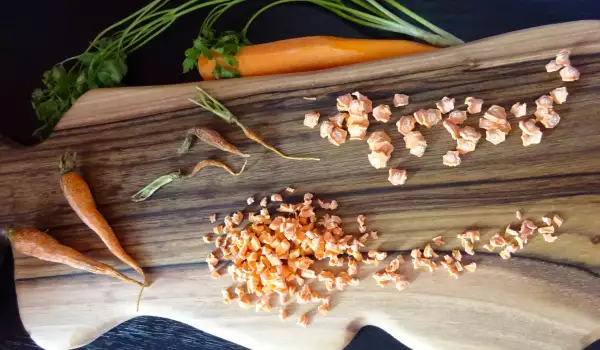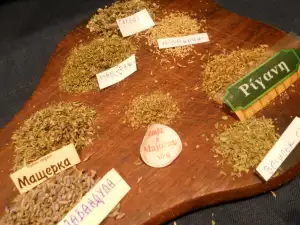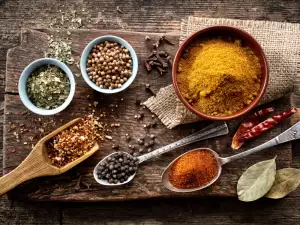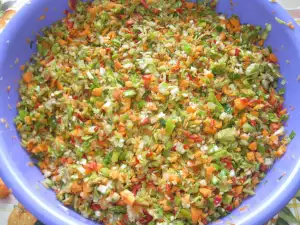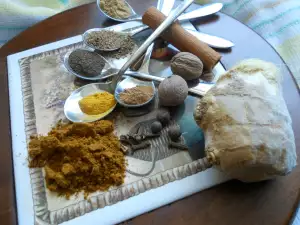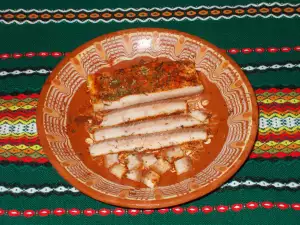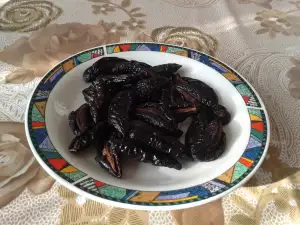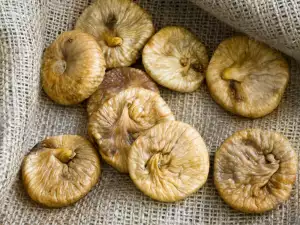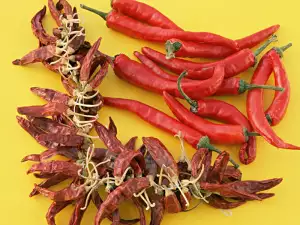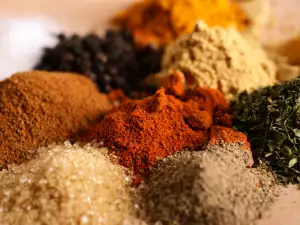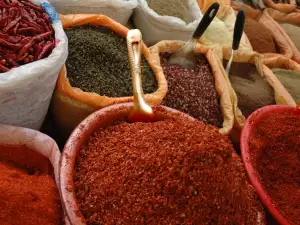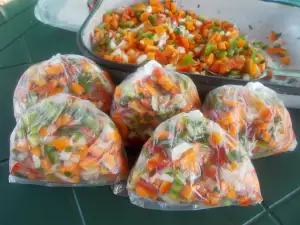How to make
Dried vegetables preserve vitamins and improve the taste of dishes, soups and especially broths.
They are easy to store, do not take up much space and are prepared very quickly.
To store them for the winter, we need a vegetable chopping board, a sharp knife and fresh vegetables from the garden.
Their drying time varies depending on several factors:
The humidity in your home, the thickness of the slice and what kind of appliance you use - oven, dehydrator or no heat treatment.
The time when you dry the vegetables is also important - of course summer is the most suitable period.
Humidity should be low. That is why by the sea the drying of herbs and vegetables is slow.
I dry carrots in three trays that I use for different types of dishes.
Taking them out of the garden bed, I arrange them by size. I dry the tiniest of them whole. I wash them well and dry them with a cotton towel.
I put them on cheesecloth and dry them in the shade at home. I combine whole dried carrots with parsley roots and dried parsnips for vegetable or meat bbroths.
Cut medium-sized carrots into thin circles. I dry them in the same way and use them for soups, stews, vegetable dishes and baked rice.
I wash the larger carrots and slightly grate them. I cut them into small cubes, which I place on a cotton cloth or cheesecloth in a shady and cool place.
I combine the delicious diced carrots with dried red peppers, celery, parsley and onions mainly for soups.
If you dry the carrots in a dehydrator, the time is about 24 hours at 150°F (65°C).
We store the dried vegetable in glass jars with a lid. Label with the date that they were dried.
Shake the jars to separate the pieces and check for moisture (condensation on the inside of the jar).
If you store the dried carrots in a paper breathable bag / like the ones from the bread in the bakeries/, check for moisture or mold if they are not stored properly.
You can vacuum seal them in ziplock bags.
